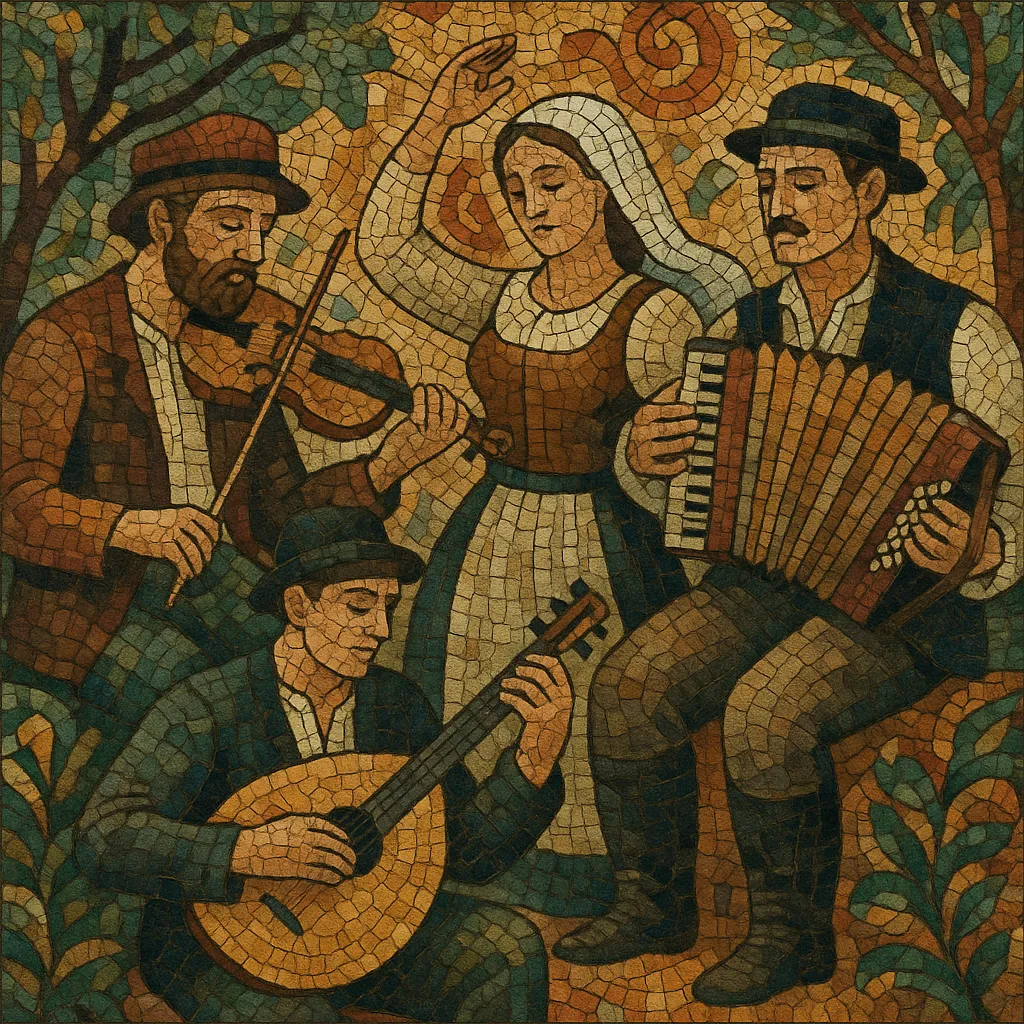European folk music is an umbrella term for the traditional, community-based music practices of Europe, spanning ballads, dance tunes, ritual songs, and work songs passed down largely through oral transmission. It emphasizes local languages, modal melodies, and characteristic rhythms linked to social dances and seasonal customs.
While many of its musical roots are older, the idea of “folk” as a category coalesced in the 19th century alongside nation-building, when collectors and scholars documented village repertoires and instruments. Today, European folk music encompasses both preserved regional traditions and living, evolving practices that continue to inform contemporary genres.
European folk music draws on practices that predate written notation, with communal singing, dancing, and storytelling embedded in local life. Medieval and early modern liturgical and secular musics interacted with rural traditions, while instruments such as fiddles, bagpipes, harps, hurdy-gurdies, and flutes carried repertories across regions.
In the 1800s, thinkers like Johann Gottfried Herder framed “Volkslied” (folk song) as the authentic voice of a people. Across Europe, scholars and composers (e.g., the collections and transcriptions of Bartók and Kodály) documented village tunes and dances, shaping the modern notion of European folk music and influencing art music.
The 20th century saw waves of folk revivals, particularly mid-century, spurred by radio, records, and folk clubs. Performers and ensembles standardized repertoires, revived old instruments, and brought regional styles to national and international stages. This era also saw fusion with popular forms—seeding folk rock, folk jazz, and later folk metal and neofolk.
Today, European folk music thrives in festivals, conservatories, and local community events. Traditionalists aim at historical performance practice, while innovators blend folk idioms with electronics, rock, or classical textures. The result is a diverse, pan-European ecosystem linking living heritage with modern creativity.
Choose regionally rooted instruments: fiddles, bagpipes, hurdy-gurdy, accordion/concertina, flute/whistle, bouzouki/cittern, harp, tambourine/frame drum, or guitar. Aim for earthy timbres and acoustic textures; drones (bagpipe, hurdy-gurdy, or sustained strings) add modal weight.
Compose singable, memorable tunes using modes common in European traditions (Dorian, Mixolydian, Aeolian). Ornamentation—cuts, rolls, mordents, slides—should reflect the target region (e.g., Irish rolls, Balkan slides).
Anchor pieces in dance-derived meters: jigs (6/8), reels (4/4), polkas (2/4), waltzes (3/4), schottisches, mazurkas, or complex Balkan meters (7/8, 9/8, 11/8). Emphasize steady pulse and lift suitable for dancing; use rhythmic drones or ostinati to drive momentum.
Keep harmony supportive and sparse: drones, pedal points, parallel fifths/thirds, and simple triads. Favor heterophony (multiple voices elaborating the same tune) or melody-plus-drone textures over dense chord changes.
Use local language and storytelling: ballads, historical episodes, seasonal rites, and work or love songs. Strophic forms with refrain are common. Call-and-response and communal choruses enhance participation.
Feature unison or close-interval harmonies; alternate solo verses with full-ensemble refrains. Leave space for instrumental breaks and dance sets. Keep tempos and articulations aligned with dance function and regional style.


